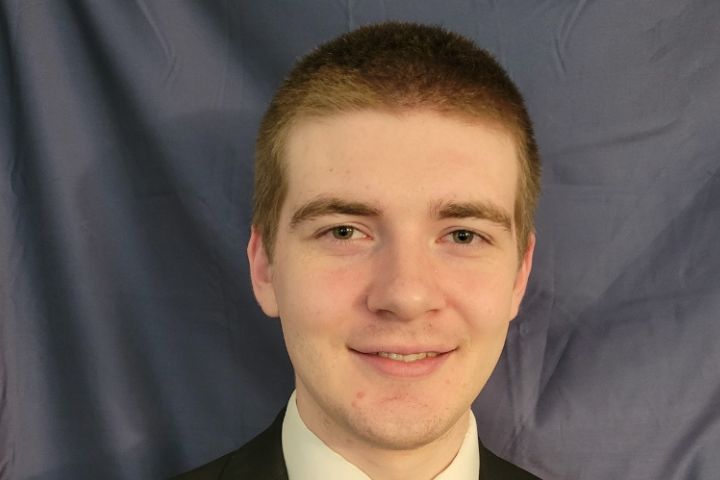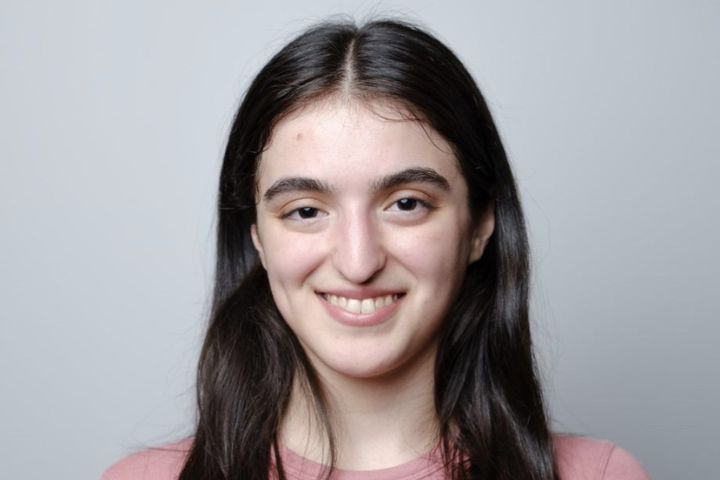Four graduate students from across the College are 2023 recipients of a prestigious $10,000 fellowship from the Illinois Space Grant Consortium (ISGC). DePaul University has been a member of the Consortium since 2004, part of NASA's National Space Grant College and Fellowship Program. The extraordinary partnership funds DePaul students and faculty each year in a variety of disciplines, from astrophysics, chemistry, and math to environmental studies, supporting cutting-edge, timely research in space-related and atmospheric science. The 2023-2024 academic year will see a record number of ISGC grants awarded in the College for undergraduate and graduate research, totaling $104,500.
The $10,000 fellowship supports graduate students conducting independent research, often as part of a thesis project. This year's recipients have a variety of research interests, and all share a passion for scientific curiosity, excellence, and innovation, a key part of the NASA funding framework.
 Raffy Traas (Physics, M.S. program)
Raffy Traas (Physics, M.S. program) initially began his research pondering the existence of life elsewhere in the cosmos. As part of the Breakthrough Listen team at UC Berkeley, Traas operated a 100m radio dish at the Green Bank Observatory in West Virginia to detect narrowband, artificial, spectral features – technological 'signatures' – that may suggest intelligent life beyond Earth. With this technique, Traas used the results of the Transiting Exoplanet Survey Satellite (TESS) to specifically search for intelligent life around nearby stars with Earth-like planets. This work led to
first and
second-author publications in
The Astronomical Journal and multiple conference presentations, most recently at the 73
rd International Astronautical Conference in Paris. Traas was also a recipient of the SETI (Search for Extraterrestrial Intelligence) Forward Award from the SETI Institute in 2022.
Traas plans to use the fellowship support to study the role of magnetic fields in high-mass star formation to help determine how stars emerge. In collaboration with his thesis advisor Dr. Anuj Sarma, Traas will be working with the Very Large Array (VLA), the world's largest radio telescope. Eventually, he hopes to support the NASA Astrophysics Science Division and the Philippine Space Agency. “I was adopted from the Philippines when I was 2 and am a proud Filipino. Growing up without any Filipino astrophysicist role models, I hope to someday inspire young Filipinos interested in the universe to pursue their dreams" says Traas.
 Andrew Jocham (Physics, M.S. program)
Andrew Jocham (Physics, M.S. program) is likewise interested in studying how stars form. The fellowship will support his thesis research, which also focuses on high mass stars – whose mass is eight times that of the sun – and how they seed additional star formations by distributing heavy elements in interstellar space. Jocham will be looking at the ATLASGAL survey, which has identified up to 10,000 dust clumps in our galaxy that could provide the breeding ground for new stars, or “stellar nurseries." Working with Dr. Sarma, Jocham will perform data analysis with a radio instrument to develop a model of the chemical makeup of the star-forming region and its time evolution to better understand the environmental conditions and processes of these unique areas.
Prior to this work Jocham conducted research at Carthage College on the Dark Energy Survey (DES), which contains hundreds of millions of galaxies, in addition to a project on gravitational waves. Analyzing the mathematical foundations of the waves, he developed a differential equation to help explain the Newtonian mechanics behind the phenomenon, which was later used to develop a programming model and compared with data from the Laser Interferometer Gravitational Observatory (LIGO). In the future Jocham hopes to become a researcher in the field of observational physics as a project leader or data analyst.
 Elene Drosos' (Environmental Science, M.S.)
Elene Drosos' (Environmental Science, M.S.) interest in plant science began with her undergraduate work at DePaul, where she earned a degree in Environmental Science (BS). During this time, she was a research assistant in Dr. Jessica Vogt's Lab for Urban Forestry in the Anthropocene (LUFA), where she worked on a project examining the damage of Chicago windstorms on street trees in the Rogers Park area. This work was followed by a senior thesis supervised by Dr. Christie Klimas on carbon storage loss in Evanston-area trees due to invasive species growth, for which Drosos received a Louis Stokes Alliance for Minority Participation National Science Fund Grant for Undergraduate Research.
Drosos' current focus centers around damage from ambient ozone pollution on plants in the Chicagoland area. The ISGC fellowship will allow her to track the effects of secondary ozone pollution from NOx (nitrogen oxides) and VOCs (volatile organic compounds), which are released when fuel is burned at high temperatures and can be emitted from vehicles, airplanes, and industrial sources. Drosos will use ozone indicator gardens at Highland Park, O'Hare International Airport, and the Peggy Notebaert Museum to visualize damage through burn marks, known as stipples, on the leaves of sensitive plants in conjunction with ozone air quality sensor readings and photosynthesis/plant functioning data from garden samples. Ultimately, she hopes to use this research to support further study on the environmental impacts of the nation's air transportation system.
 Kiley Chernicky (Biological Sciences, M.S.)
Kiley Chernicky (Biological Sciences, M.S.) seeks a better understanding of how forest ecosystems are responding to climate change, supported by a long-standing interest in environmental biology. As an undergraduate student, Chernicky studied the effects of degrading mangrove adjacent forest habitats on a coastal crab species and later conducted research on the impact of an invasive nest parasite on Darwin's finches in the Galapagos Islands. These projects led to four peer-reviewed publications in
PLoS One, Journal of Ornithology, Ecology and Evolution, and
Authorea. After spending time on a separate research project studying boreal forests in the Yukon Territory, Chernicky decided to shift her focus to understanding climate-driven shifts in these vulnerable forest landscapes.
“The boreal forest is a globally important carbon sink and is particularly vulnerable at its southern range due to a variety of factors (e.g., drought, fires, and insect outbreaks) that are influenced by climate change" explains Chernicky. This fellowship will enable her to conduct extensive fieldwork in North American boreal forests to study how white spruce and balsam fir trees are responding to climate change driven increases in competitive pressures from temperate tree species. Chernicky will use both long- and short-term data on seedfall and seedling counts in combination with aerial drone photography and ground mapping to determine if the forests are stable or in transition due to a shifting climate. “Having the support of the ISGC Graduate Fellowship will ensure that this key data is collected and published, cementing an important step towards filling a gap in our understanding of these ecosystems" says Chernicky.